Americans have mixed feelings and more than a few concerns about robotic exoskeleton technology with artificial intelligence in their controllers, and most have never even heard of this technology. A recently published Pew Research survey of over 10,000 US adults reveals how the public feels about AI, human enhancement, and powered exoskeletons with built-in artificial intelligence (AI) computer systems on board. Survey participants were split if this technology would be a net benefit or deterrent to workers but felt overwhelmingly positively if it is used for medical or first response purposes. Another finding in the survey is that the more people knew about exoskeletons, the more favorable their opinion became, a strong argument for the need for more education regarding this field. The full study (link to Pew Research Center) explores multiple topics: facial recognition, algorithms, driverless vehicles, gene, editing, and computer chip implants, but this article will focus only on wearable robotics.

Americans are split on robotic exoskeleton with built-in AI with greatly increased strength for manual labor would make conditions for workers better or worse.
One thing to consider with the question above is that these are powered exoskeletons that will greatly increase the strength of workers, and there are very few of these in development either by companies or in academia. As a counter-argument, just because occupational powered exoskeletons are not designed to allow workers to lift more, it doesn’t mean they won’t be utilized to do just that.

The vast majority of the public is not aware of robotic exoskeletons with built-in AI for manual labor. It may be that the AI component confused participants, but it could be that after all of these years the general public is not aware of exo technology.

Nearly one-third of Americans answered that the widespread use of exoskeletons with built-in AI to greatly increase strength for manual labor would be good for society, while 24% felt they were a bad idea. The rest did not have an opinion one way or the other. Note, however, that in the same survey, 54% say they would not want to use such a device, while only 45% answered they would.
Licensing and Limitations on Employers Improve Perception:
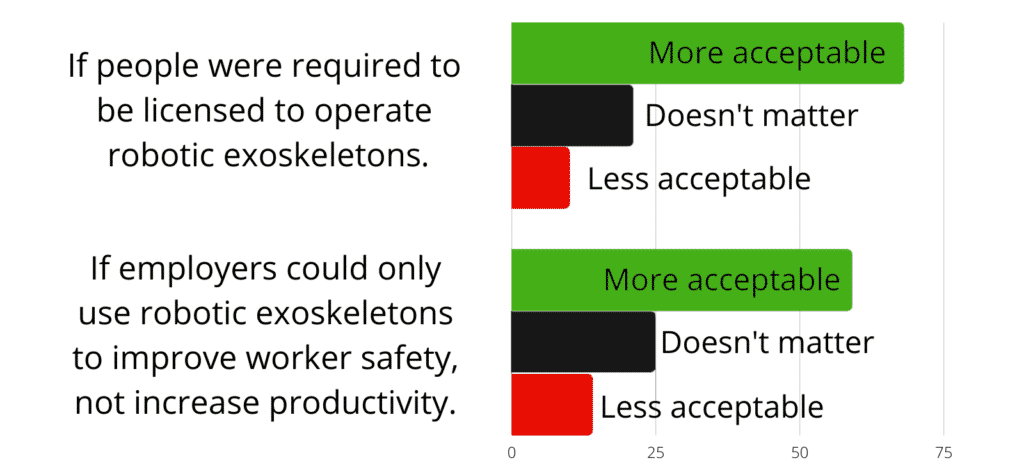
Sixty-eight (68%) of the participants asked indicated that they would be more accepting of exoskeletons with built-in AI controllers if licensing for the use of the device was required. This would be similar to how forklift operators require a license. This is not a topic that has been explored by the Exoskeleton Report team, as it has been hard to imagine that workers would want even more certification. Perhaps, the survey participants were concerned that users would be asked to don powerful active exoskeletons with insufficient training by their employer. On the subject of employers, 59% of Americans would like to see limits on how companies could use exos for manual labor jobs. Specifically, limit them to enhancing safety rather than increasing productivity. This will inevitably cause some friction because ergonomic projects tend to have a small productivity boost component attached to them to secure funding, make them more palpable to leadership, and improve the ROI.
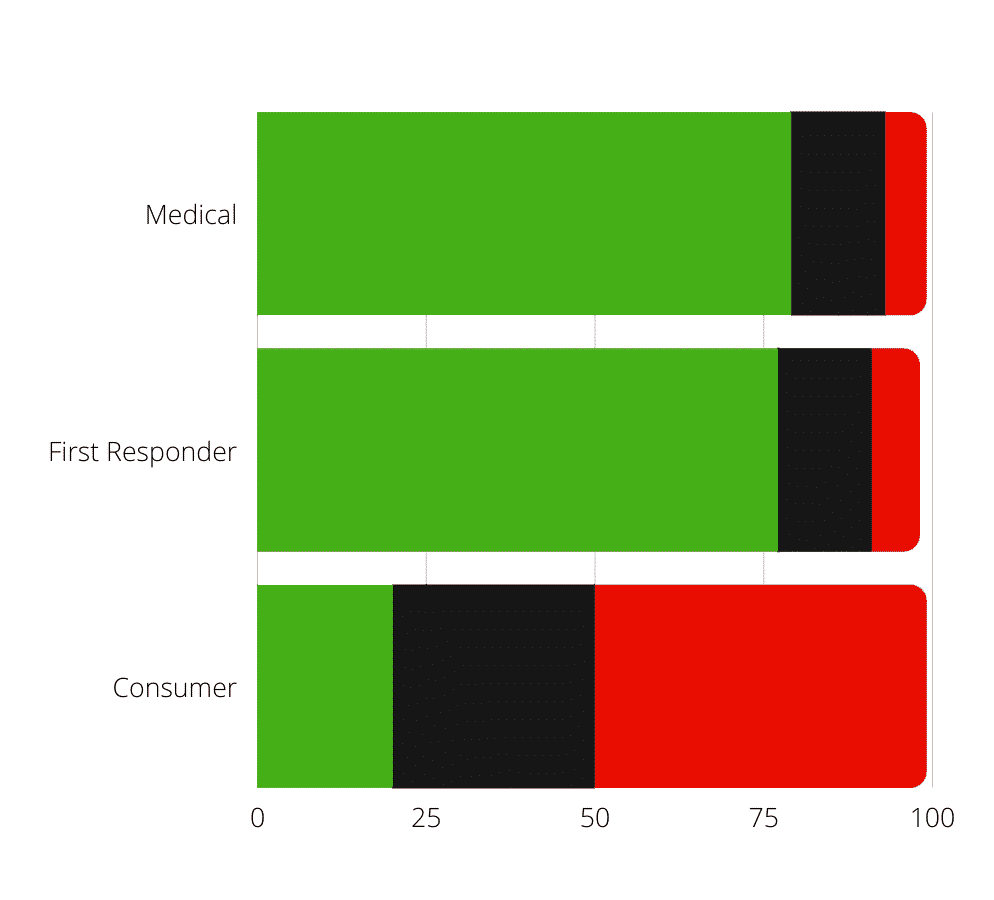
Americans support the use of powered exoskeletons with built-in AI to improve the quality of life for people with physical limitations or to increase the ability of firefighters to lift in an emergency. For whatever reason, half of the participants did not approve of recreational powered exoskeletons with the same capabilities.
There appears to be a strong positive bias toward medical and first responder robotic exoskeletons with built-AI control that could increase the user’s strength. However, people don’t want to see the same technology spill into the streets, parks, or common areas. There is a trend among amputees who use powered prosthetics, to try to blend in as much as possible. Ideally, prosthetic devices should look and sound natural, and not draw attention. Shockingly, it would appear that there is a good reason why robotic prosthetic users would want that. It would appear that the American public does not feel comfortable with powered wearables in public spaces. However, the survey does indicate a solution to this (below).
Familiarity Plays a Key Role

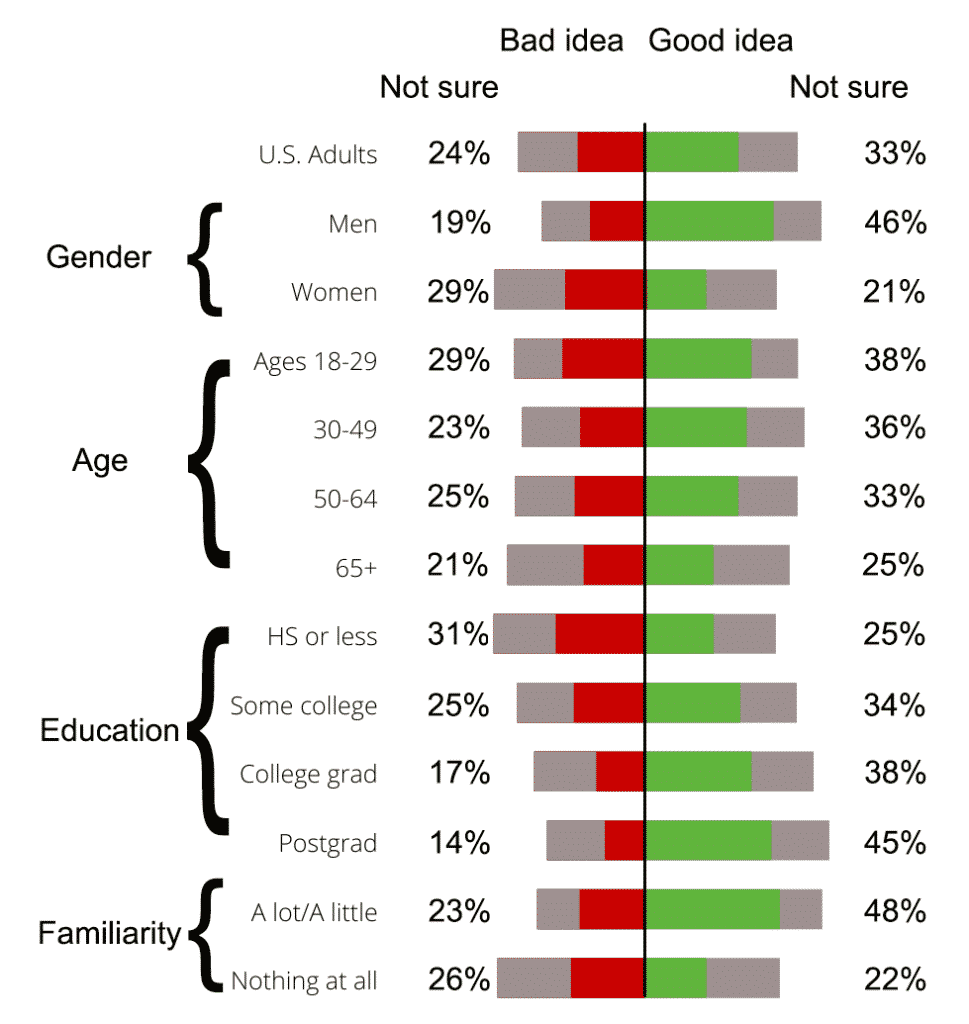
People who have heard about exoskeletons with built-in AI that can greatly increase strength for manual labor a far more likely to think they would be a good idea for society (48% to 22%). Familiarity with exo technology outweighs age or education level as a predictor of favorable opinion. In other words, no single factor other than prior exposure to information on exoskeleton technology was as critical towards having a more favorable opinion of this emerging technology. You can find the full breakdown in Chapter 8 of the Pew Research report (8. Mixed views about a future with the widespread use of robotic exoskeletons to increase strength for manual labor jobs – external link).
Success and Opportunities for Improvment in Communication

The majority of Americans answered the use of robotic exoskeletons to greatly increase strength for manual labor will have workers experience fewer workplace injuries, and more people would be able to perform manual labor jobs.

The majority of Americans also believe that the use of robotic exoskeletons to greatly increase strength for manual labor will result in employers needing fewer work hands which would lead to layoffs and that workers would lose strength by relying too much on exoskeletons.
The Pew Research report shows that at the end of 2021 the majority of Americans had not heard of powered exoskeletons with embedded AI for strength augmentation. They felt skeptical about this technology and worried about its side effects. The single most important factor in having a positive outlook toward these types of devices was prior exposure to information on the subject. Prior knowledge of powered exoskeletons with an AI component in its control was more important for a favorable opinion of the technology than educational level or age alone. Exoskeleton developers have to devote more time to crafting and distributing their message, as some major misconceptions about the effects of using powered exoskeletons are already deeply ingrained in the majority of the population.
One major limitation of the study is that it focused primarily on AI technology. Furthermore, the study placed itself into a narrow box by focusing exclusively on the use of powered exoskeletons to greatly increase the strength of workers. These two limitations, the use of AI and great strength increase, likely cause some of the results to be skewed. However, it is doubtful that Americans are capable of finely differentiating between passive, active, and strength augmentation exoskeleton devices at this point anyways.
Reference:
AI and Human Enhancement: Americans’ Openness Is Tempered by a Range of Concerns, Pew Research Center Report, March 17, 2022, link


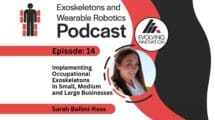
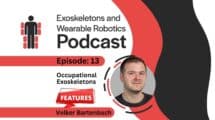




Add Comment